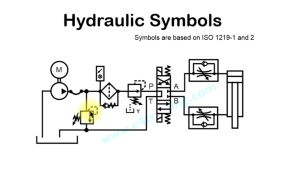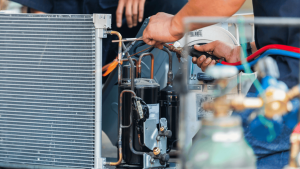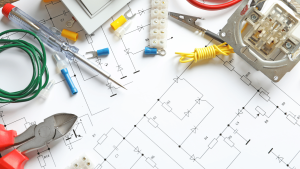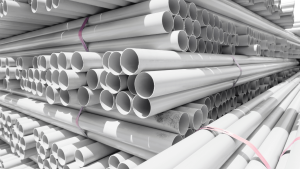What is a Thrust Block? How does it work?
Contents
- 1 What is a Thrust Block?
- 2 How Thrust Block Work ?
- 3 Components of a Thrust Block
- 4 Types of Thrust Blocks
- 5 Applications of Thrust Blocks
- 6 Installation and Maintenance of Thrust Blocks
- 7 Future Trends and Innovations in Thrust Block Technology
Types of Thrust Blocks
Applications of Thrust Blocks
Installation and Maintenance of Thrust Blocks

Contents1 What are Hydraulic Schematic Symbols ?1.1 Importance of Hydraulic Systems in Various Industries1.2 Overview of Hydraulic Schematic Symbols2 Basics of Hydraulic Systems2.1 Explanation of Hydraulic Principles3 Components of Hydraulic Schematic Symbols3.1 1. Pumps and Motors3.2 2. Cylinders3.3 3. Valves3.4 4. Reservoirs3.5 5. Filters and Coolers3.6 6. Accumulators3.7 7. Pipes and Hoses3.8 8. Accessories3.9 Using […]

Contents1 What is Pipe Installation?1.0.1 Importance of Proper Pipe Installation1.0.2 Different Types of Pipes and Their Applications2 Types of Piping Materials2.1 Metal Pipes2.2 Plastic Pipes2.3 Other Materials2.4 Advantages and Disadvantages3 Tools and Equipment Needed for Pipe Installation3.1 Basic Hand Tools3.1.1 Advanced Machinery3.2 Safety Equipment3.3 Ensuring Proper Equipment Handling4 How to Prepare for Pipe Installation ?4.1 […]

Contents1 What is Pigging?1.1 How Pigging Works2 Types of Pigging in pipeline and Their Uses2.1 Utility Pigs2.2 Inline Inspection Pigs (Smart Pigs)2.3 Specialty Pigs2.4 Foam Pigs2.5 Gel Pigs3 What are pigging operations?3.1 Key Components of Pigging Operations:3.2 Common Types of Pigging Operations:4 Applications of Pigging in Different Industries5 Benefits of Pigging5.1 Efficiency and Cost-Effectiveness5.2 Safety […]

Contents1 I. What is piping drawings?2 II. Types of piping drawings2.1 1. Piping and Instrumentation Diagrams (P&IDs)2.2 Purpose and Use2.3 Symbols and Notations2.4 Reading and Interpretation2.5 2. Isometric Piping Drawings2.6 Characteristics2.7 Symbols and Notations2.8 Applications2.9 3. Orthographic Piping Drawings2.10 Plan and Elevation Views2.11 Construction and Fabrication2.12 4. 3D Piping Models2.13 Software and Tools2.14 Advantages2.15 5. […]

Contents1 Introduction to Types of Pipes2 Type of Pipes Materials Used in Pipe Manufacturing2.1 Metal Pipes2.1.1 Steel and Stainless Steel2.1.2 Copper2.1.3 Aluminum2.2 Plastic Pipes2.2.1 PVC (Polyvinyl Chloride)2.2.2 PEX (Cross-linked Polyethylene)2.2.3 ABS (Acrylonitrile Butadiene Styrene)2.3 Other Materials2.3.1 Concrete2.3.2 Clay2.3.3 Glass3 Types of Pipes by Application3.1 Plumbing and Water Supply3.1.1 Potable Water Supply Pipes3.1.2 Sewage and Drainage […]

Contents1 I. What is PVC Pipes?1.1 Key Characteristics of PVC Pipes:1.2 What is PVC Pipes use for ?1.3 Brief History of PVC Pipes1.4 Importance and Common Uses2 II. Manufacturing Process of PVC Pipes2.1 Raw Materials Used2.2 Step-by-Step Manufacturing Process2.3 Types of PVC Pipes Produced3 III. Types and Grades of PVC Pipes3.1 Types of PVC Pipes3.2 […]

Contents0.1 What is Pipe Painting?0.2 Paints Used for Piping0.3 Overview0.4 What is the purpose of pipe painting?0.5 Historical Context1 Materials and Tools1.1 Paints1.2 Piping Tools1.3 Surface Preparation2 Basic Techniques3 Advanced Techniques4 Piping Painting in Different Contexts5 Piping Painting Codes and Standards and How to Inspect Piping Painting5.1 Codes and Standards5.2 Inspection Techniques5.3 Quality Control6 Maintenance […]


 Automation System
Automation System  Energy Engineeing
Energy Engineeing  Instrumentation System
Instrumentation System  Mechanical Engineeing
Mechanical Engineeing  Piping Technologies
Piping Technologies  Transportations
Transportations  Manufacturing
Manufacturing  Training Material
Training Material 


